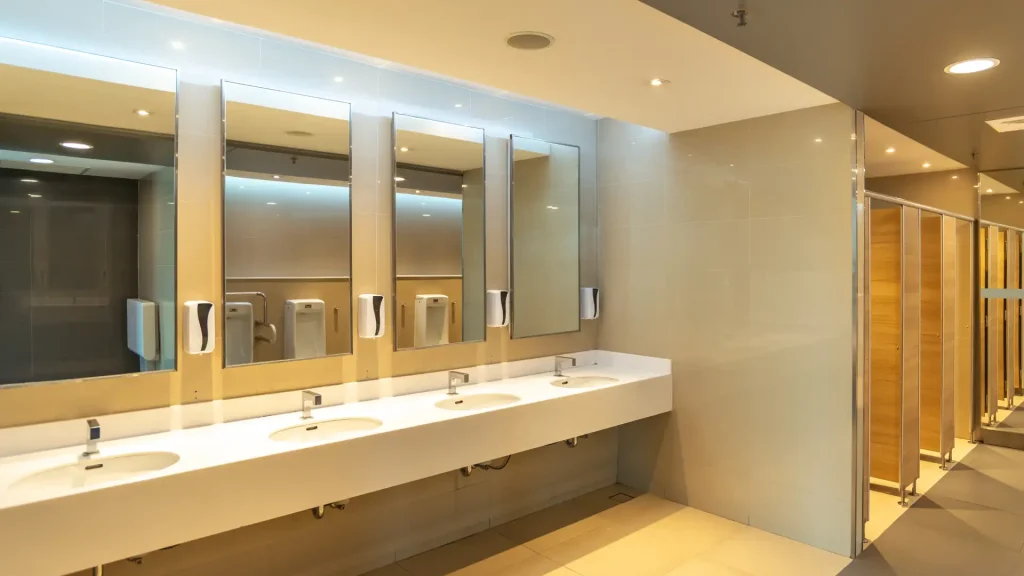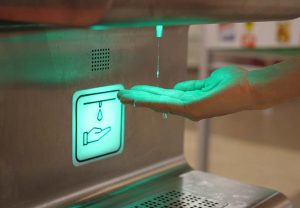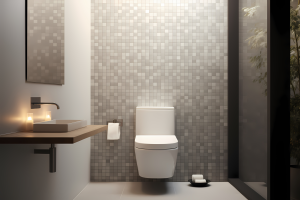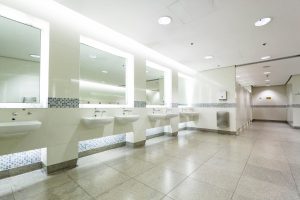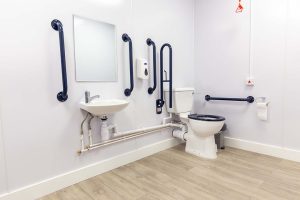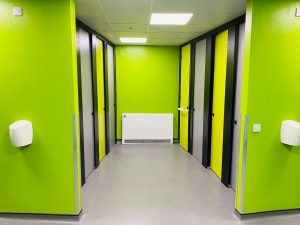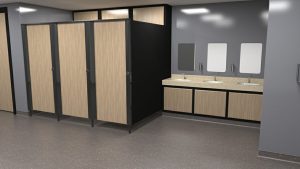Public washrooms – those essential yet often overlooked parts of our daily routine – are on the cusp of a technological transformation. The concept of the “smart washroom” is no longer science fiction, with features like touchless controls, self-cleaning surfaces, and even personalised hygiene settings becoming increasingly common. But are these innovations just a passing fad, or are they poised to become the norm for public conveniences of the future?
The Smart Washroom
The driving force behind the smart washroom revolution is a confluence of factors. Firstly, there’s the ever-present focus on hygiene. The COVID-19 pandemic has heightened public awareness of germ transmission, and touchless technology in washrooms offers a way to minimise contact with potentially contaminated surfaces. Sensor-activated faucets, soap dispensers, and paper towel dispensers not only reduce the spread of germs but also offer a more convenient and user-friendly experience.
Secondly, sustainability is a growing concern. Smart washrooms can be equipped with features that conserve water – for example, low-flow toilets and automatic shut-off sensors for taps. Additionally, some smart systems can monitor water usage patterns, allowing for proactive maintenance and leak detection, further reducing water waste.
Beyond hygiene and sustainability, smart washrooms can also enhance user comfort and accessibility. Features like ambient lighting that adjusts automatically, built-in temperature control, and even in-mirror information displays can create a more pleasant and welcoming environment. For those with disabilities, voice-activated controls and automatic door openers can make washrooms more accessible and user-friendly.
However, the transition to smart washrooms isn’t without its challenges. The initial cost of installation and maintenance for these high-tech systems can be significantly higher than traditional washrooms. Additionally, concerns around data privacy might arise with some smart features, particularly those that collect usage data.
Furthermore, there’s the question of user acceptance. While many people appreciate the benefits of touchless technology and environmental responsibility, some may find the extensive use of sensors and automation impersonal or even intrusive. The key, therefore, lies in striking a balance between technological innovation and a user-centric approach.
Here’s a glimpse into what the future of smart washrooms might hold:
- Self-cleaning surfaces: Imagine washrooms with surfaces coated with anti-microbial materials that actively reduce the growth of bacteria. This would further elevate hygiene standards and reduce the need for frequent deep cleaning.
- Personalised hygiene settings: Smart toilets might allow users to adjust water temperature, bidet functions, and drying settings via voice commands or a smartphone app.
- Real-time monitoring and maintenance: Sensor data collected in smart washrooms could be used for real-time monitoring of water usage, potential leaks, and even air quality. This would allow for predictive maintenance and prevent problems before they arise.
- Improved accessibility features: Smart washrooms could integrate advanced voice-recognition technology and gesture controls to further enhance accessibility for people with disabilities.
The adoption of smart washrooms will likely be a gradual process, influenced by factors like cost-effectiveness, user acceptance, and advancements in technology. However, the potential benefits for hygiene, sustainability, and user experience are undeniable. As technology continues to evolve and public expectations shift, smart washrooms have the potential to become the norm, transforming the often-dreaded public restroom into a genuinely positive experience.
Public Perception: What Do People Think?
While the technology behind smart washrooms is evolving rapidly, it’s important to consider public perception. A recent survey by a hygiene solutions company found that over 70% of respondents would be more likely to use a public washroom equipped with touchless technology. Additionally, nearly 60% expressed interest in features that promote water conservation.
However, the same survey also revealed concerns about data privacy and potential malfunctions with smart systems. Therefore, ensuring transparency about data collection and prioritising user-friendliness will be crucial for widespread adoption.
The Road Ahead: A Future Flush with Innovation
The smart washroom revolution is still in its early stages, but the potential for positive change is significant. As technology becomes more affordable and user-friendly, and public expectations for hygiene and sustainability continue to grow, smart washrooms are poised to become the standard for public conveniences in the years to come. This shift will not only enhance user experience but also contribute to a more hygienic and sustainable future.


